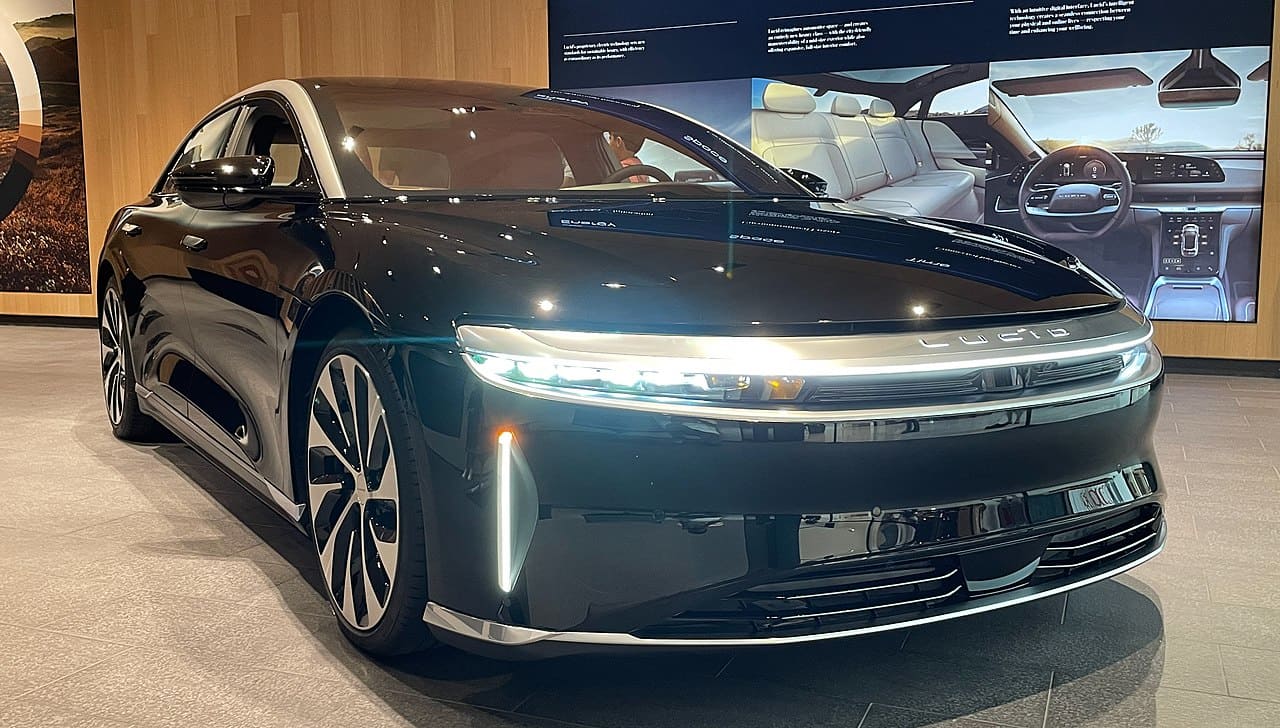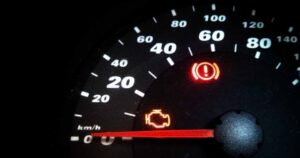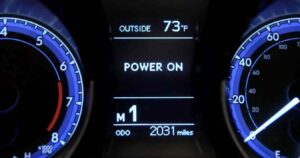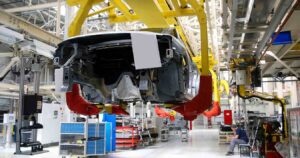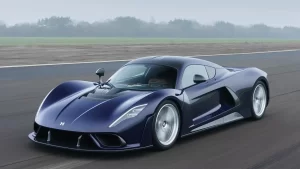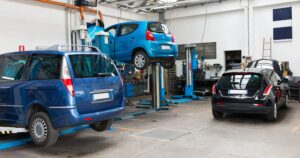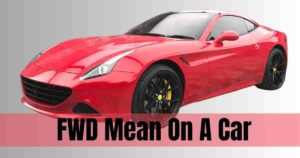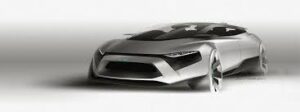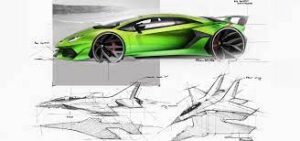Lucid Motors is a new player in the electric vehicle (EV) market, aiming to challenge Tesla with its luxury and performance-oriented models.
The company has recently started delivering its flagship sedan, the Lucid Air, and plans to launch an SUV, the Lucid Gravity, in 2024.
But how much do Lucid cars cost, and what factors affect their pricing? In this ultimate guide, we will answer these questions and compare Lucid with Tesla, its main rival.
Table of Contents
ToggleLucid Air Models and Prices
The Lucid Air is a sleek and spacious sedan that offers impressive range, power, and efficiency. The car comes in four variants, each with different battery sizes, performance levels, and features. Here are the starting prices and key specifications of each model:
Air Pure: $87,400. This is the base model that will be available in 2022. It has a single-motor rear-wheel-drive system that delivers 480 horsepower and 406 miles of range. It also has a 34-inch curved glass cockpit display, a 19-speaker sound system, and a panoramic glass roof.
Air Touring: $107,400. This model adds a dual-motor all-wheel-drive system that boosts the power to 620 horsepower and maintains the same range of 406 miles. It also upgrades the interior with leather seats, wood trim, and a 21-speaker sound system.
Air Grand Touring: $138,000. This is the most efficient model that boasts an EPA-rated range of 516 miles, the longest of any EV on the market. It also has a more powerful dual-motor system that produces 800 horsepower and can accelerate from 0 to 60 mph in 3 seconds. It comes with premium features such as a head-up display, massaging seats, and a 29-speaker sound system.
Air Dream Edition: $169,000. This is the top-of-the-line model that offers the ultimate performance and luxury. It has two versions: the Dream Edition Performance and the Dream Edition Range. The Performance version has a whopping 1,111 horsepower and can sprint from 0 to 60 mph in 2.5 seconds, while the Range version has 933 horsepower and can travel up to 520 miles on a single charge. Both versions have exclusive exterior colors, wheels, and badges, as well as a full suite of advanced driver-assistance systems.
All prices are before any federal or state tax credits or incentives that may apply to EV buyers. Lucid also offers various options and packages that can increase the cost of each model.
Lucid Gravity SUV and Price
The Lucid Gravity is an upcoming SUV that will share the same platform and technology as the Lucid Air. The company has not revealed much details about the Gravity yet, but it is expected to have a similar design language, spacious interior, and high-performance capabilities as the Air. The Gravity will also offer flexible seating options for five, six, or seven passengers, as well as a large cargo space with a clamshell rear opening.
The Gravity is slated to debut in 2023 and arrive in 2024. The price has not been announced yet, but it is likely to be higher than the Air models due to its larger size and utility.
Lucid Cars Financing Options
Lucid offers various financing options for its customers through its digital platform called Lucid Financial Services. The platform allows customers to apply for leases or loans online with competitive rates from Bank of America. Customers can choose from different lease terms (24-, 36-, or 48-months) or loan terms (various lengths) depending on their preferences and situations.
Lucid Financial Services also provides a concierge service that can assist customers with the application process and answer any questions they may have. Additionally, Lucid offers trade-in options for customers who want to sell their current vehicles and use the proceeds toward their new Lucid cars.
Lucid Cars Maintenance Costs
Lucid aims to make servicing its cars as smooth and convenient as possible for its customers. The company provides several ways to service its vehicles:
Mobile service: Lucid has a fleet of mobile service vans that can come to the customer’s location and perform annual maintenance, routine servicing, and most repairs. The vans are operated by certified technicians who are all Lucid employees. The vans also have coffee machines for customers who want to enjoy a beverage while their car is being worked on.
Remote diagnostics and repairs: Lucid can use its state-of-the-art technology to diagnose and sometimes fix problems with its cars remotely through over-the-air updates (OTAs). OTAs can also update the software of the cars without requiring any customer intervention.
Roadside assistance: Lucid offers 24/7 roadside assistance with live support for any incidents or emergencies involving its cars. If the car needs to be towed to a service facility, Lucid will cover the transportation cost and help the customer get to their destination with a shared ride, a loaner vehicle, or other arrangements.
Service centers: Lucid has a growing network of service and satellite service facilities across the US and Canada, where customers can bring their cars for more complex repairs or inspections. The facilities are designed to be high-end and sleek, matching the quality and style of the cars.
Body repair centers: Lucid has partnered with certified body repair centers in major markets, where customers can take their cars for any cosmetic or structural damage. The centers have been selected for their expertise in repairing high-end EVs and meeting the Lucid standards of customer service.
Lucid has not disclosed the exact costs of servicing its cars yet, but it is expected to be comparable to other luxury EVs in the market.
The Reasons Behind Lucid’s High Price Tag
Lucid cars are not cheap, and there are several reasons behind their high price tag. The main reason is that Lucid is focused on delivering cutting-edge technology, performance, and luxury that set its cars apart from the competition. Some of the features that justify Lucid’s pricing include:
Battery technology: Lucid has developed its own battery technology that enables its cars to achieve industry-leading range and efficiency. The company claims that its batteries can deliver 4.5 miles per kWh of energy, compared to Tesla’s 4 miles per kWh. This means that Lucid can use smaller and lighter batteries to achieve longer range, saving weight and cost. Lucid also uses a 900 V+ architecture that allows its cars to charge faster than most EVs on the market.
Motor design: Lucid has also designed its own electric motors that are compact, powerful, and efficient. The company says that its motors can fit inside a standard airplane carry-on bag and weigh only 163 pounds, yet they can produce up to 670 horsepower each. Lucid also integrates the motors with the transmission and power electronics in a single unit, reducing complexity and improving performance.
Interior quality: Lucid cars have spacious and luxurious interiors that rival those of traditional luxury brands. The company uses premium materials such as leather, wood, metal, and glass to create a refined and elegant cabin. The cars also have advanced features such as a 34-inch curved glass cockpit display, a head-up display, massaging seats, a panoramic glass roof, and a high-end sound system.
Exterior design: Lucid cars have a distinctive and futuristic exterior design that reflects their aerodynamic and efficient nature. The company says that its cars have a coefficient of drag of 0.197, which is lower than any other production car in the world. The cars also have sleek LED headlights and taillights, retractable door handles, and unique wheels.
Lucid’s Future Plans for Making More Affordable Cars
Lucid’s current lineup of cars is aimed at the high-end segment of the EV market, but the company has plans to make more affordable models in the future. According to Lucid CEO Peter Rawlinson, the company’s vision is to produce a $25,000 electric car that can compete with Tesla’s Model 3 or Model 2.
However, Rawlinson said that it will take time and technology to achieve this goal. He estimated that it will take about eight or nine years for Lucid to make such a car on its own, which he said is too late for mass adoption of EVs. He suggested that if Lucid could license its technology to other automakers, it could accelerate the process to four years.
Rawlinson said that some car companies have approached Lucid to talk about licensing its technology, but nothing tangible has happened yet. He said that there is a “mouthwatering potential” for such partnerships, as they would benefit both parties and the environment.
The Factors That May Influence Lucid’s Pricing Strategy
Lucid’s pricing strategy is influenced by several factors, both internal and external. Some of these factors include:
Costs: One of the main factors that affect Lucid’s pricing is the cost of producing its cars. This includes the cost of materials, labor, equipment, facilities, research and development, marketing, distribution, and other expenses. Lucid tries to minimize its costs by using its own technology, optimizing its production process, and leveraging economies of scale.
Demand: Another factor that affects Lucid’s pricing is the demand for its cars in the market. This depends on various factors such as customer preferences, income levels, environmental awareness, availability of charging infrastructure, government policies, and competitive offerings. Lucid tries to estimate the demand for its cars by conducting market research, analyzing customer feedback, and monitoring sales trends.
Competition: A third factor that affects Lucid’s pricing is the competition from other EV makers or traditional automakers. This includes both direct competitors such as Tesla or Porsche and indirect competitors such as Mercedes-Benz or BMW. Lucid tries to differentiate itself from its competitors by offering superior range, performance and luxury
Market conditions: A fourth factor that affects Lucid’s pricing is the market conditions in the EV industry and the broader economy. This includes factors such as supply and demand, inflation, exchange rates, tariffs, regulations, subsidies, and consumer confidence. Lucid tries to adapt its pricing to the changing market conditions by adjusting its production capacity, inventory levels, and promotional activities.
Lucid vs Tesla: A Comparison of Two Electric Car Leaders
Lucid and Tesla are often compared as two of the most innovative and ambitious EV makers in the world. Both companies share a similar vision of creating sustainable and advanced transportation solutions for the future.
However, they also have some notable differences in their strategies, products, and cultures. Here are some of the main points of comparison between Lucid and Tesla:
History: Lucid was founded in 2007 as Atieva, a battery technology company that supplied batteries to other EV makers such as Faraday Future and Formula E.
The company rebranded itself as Lucid Motors in 2016 and shifted its focus to making its own EVs. Tesla was founded in 2003 by a group of engineers who wanted to prove that electric cars could be better than gasoline cars.
The company launched its first car, the Roadster, in 2008, followed by the Model S, Model X, Model 3, Model Y, Cybertruck, and Roadster 2.
Leadership: Lucid is led by Peter Rawlinson, a former chief engineer of Tesla who worked on the Model S. Rawlinson joined Lucid in 2013 as the chief technology officer and became the CEO in 2019.
He is known for his engineering expertise, attention to detail, and passion for design. Tesla is led by Elon Musk, a visionary entrepreneur who also founded SpaceX, Neuralink, The Boring Company, and OpenAI. Musk is known for his bold ideas, charismatic personality, and unconventional style.
Funding: Lucid has raised over $6 billion in funding from various sources, including Saudi Arabia’s sovereign wealth fund, which invested $1.3 billion in 2018.
The company also went public in July 2021 through a merger with a special purpose acquisition company (SPAC) called Churchill Capital Corp IV, which valued Lucid at $24 billion.
Tesla has raised over $25 billion in funding from various sources, including public offerings, debt issuances, convertible notes, and stock options.
The company also became profitable in 2020 after years of losses and has a market capitalization of over $700 billion as of October 2021.
Production: Lucid has built a state-of-the-art factory in Casa Grande, Arizona, where it produces its cars. The factory has an initial capacity of 30,000 units per year and can be expanded to 400,000 units per year in the future.
The company also plans to build another factory in Saudi Arabia by 2024. Tesla has built several factories around the world, including in Fremont, California, Shanghai, Berlin, and Texas, where it produces its cars.
The company also plans to build more factories in India, Indonesia, and other countries. Tesla has a total production capacity of over one million units per year and aims to increase it to 20 million units per year by 2030.
Products: Lucid currently has one product, the Lucid Air, which is a luxury sedan that competes with Tesla’s Model S and other high-end cars.
The company plans to launch another product, the Lucid Gravity, which is an SUV that will compete with Tesla’s Model X and Model Y and other premium SUVs.
Lucid also intends to make more products in the future, such as a smaller sedan, a pickup truck, and a commercial vehicle.
Tesla has several products, including the Model S, Model 3, Model X, Model Y, Cybertruck, Roadster 2, and Semi. The company also makes other products such as solar panels, batteries, powerwalls, and chargers.
Technology: Lucid and Tesla both use advanced technology to power their cars and enhance their features.
Both companies have developed their own battery technology that enables them to achieve long range and fast charging.
Both companies also use electric motors that are compact and powerful. Both companies also have sophisticated software that controls the car’s functions and provides over-the-air updates. However, there are some differences in their technology as well.
For example, Lucid uses a 900 V+ architecture that allows its cars to charge faster than Tesla’s 400V architecture.
Lucid also claims that its batteries are more efficient than Tesla’s batteries. Tesla, on the other hand, has an edge in autonomous driving technology, as it has collected more data from its fleet of cars and has developed its own chip for processing it.
Culture: Lucid and Tesla have different cultures that reflect their leaders’ personalities and values. Lucid has a culture of engineering excellence, design elegance, and customer satisfaction.
The company strives to create products that are refined and sophisticated, as well as reliable and durable.
The company also values collaboration and communication among its employees and partners. Tesla has a culture of innovation, disruption, and vision.
The company aims to create products that are groundbreaking and futuristic, as well as affordable and accessible. The company also values speed and agility among its employees and partners.
The Cost Difference Between Tesla and Lucid Models
Tesla and Lucid have different pricing strategies for their models, depending on their target markets and value propositions. Here is a comparison of the cost difference between Tesla and Lucid models:
Model S vs Air: The Model S is Tesla’s flagship sedan that starts at $94,990 for the Long Range version and $149,990 for the Plaid version.
The Long Range version has a range of 405 miles, a power of 670 horsepower, and a top speed of 155 mph. The Plaid version has a range of 390 miles, a power of 1,020 horsepower, and a top speed of 200 mph.
The Air is Lucid’s flagship sedan that starts at $87,400 for the Pure version and $169,000 for the Dream Edition version.
The Pure version has a range of 406 miles, a power of 480 horsepower and a top speed of 155 mph. The Dream Edition version has a range of 520 miles, a power of 1,111 horsepower, and a top speed of 168 mph.
The cost difference between the Model S and the Air is $7,590 for the base models and $19,010 for the top models, with the Air being cheaper and more expensive respectively.
The Air offers more range and power than the Model S, but the Model S has a higher top speed and more advanced autonomous features.
Model X vs Gravity: The Model X is Tesla’s flagship SUV that starts at $99,990 for the Long Range version and $119,990 for the Plaid version.
The Long Range version has a range of 360 miles, a power of 670 horsepower, and a top speed of 155 mph.
The Plaid version has a range of 340 miles, a power of 1,020 horsepower, and a top speed of 163 mph. The Gravity is Lucid’s upcoming SUV that will share the same platform and technology as the Air.
The price and specifications of the Gravity have not been announced yet, but it is expected to be higher than the Air models due to its larger size and utility.
The cost difference between the Model X and the Gravity is unknown at this point, but it is likely to be significant.
The Gravity may offer more range and power than the Model X, but the Model X may have more seating options and cargo space.
Model 3 vs Project Gravity: The Model 3 is Tesla’s most affordable sedan that starts at $39,990 for the Standard Range Plus version and $54,990 for the Performance version.
The Standard Range Plus version has a range of 263 miles, a power of 283 horsepower, and a top speed of 140 mph. The Performance version has a range of 315 miles, a power of 450 horsepower, and a top speed of 162 mph.
Project Gravity is Lucid’s future plan to make a smaller sedan that will compete with Tesla’s Model 3 or Model 2.
The price and specifications of Project Gravity have not been revealed yet, but it is expected to be around $25,000 with similar or better performance than the Model 3.
The cost difference between the Model 3 and Project Gravity could be around $15,000 or more, with Project Gravity being cheaper.
Project Gravity could offer more range and power than the Model 3, but the Model 3 may have more features and availability.
Conclusion
Lucid cars are expensive, but they offer some advantages over Tesla and other EVs in terms of range, power, efficiency, and luxury. Lucid also has plans to make more affordable cars in the future by licensing its technology to other automakers or developing its own mass-market models. However, Lucid faces some challenges such as production capacity, customer awareness, market penetration, and competition from Tesla and other established brands. Lucid will have to prove itself as a reliable and innovative EV maker that can deliver on its promises and satisfy its customers.


